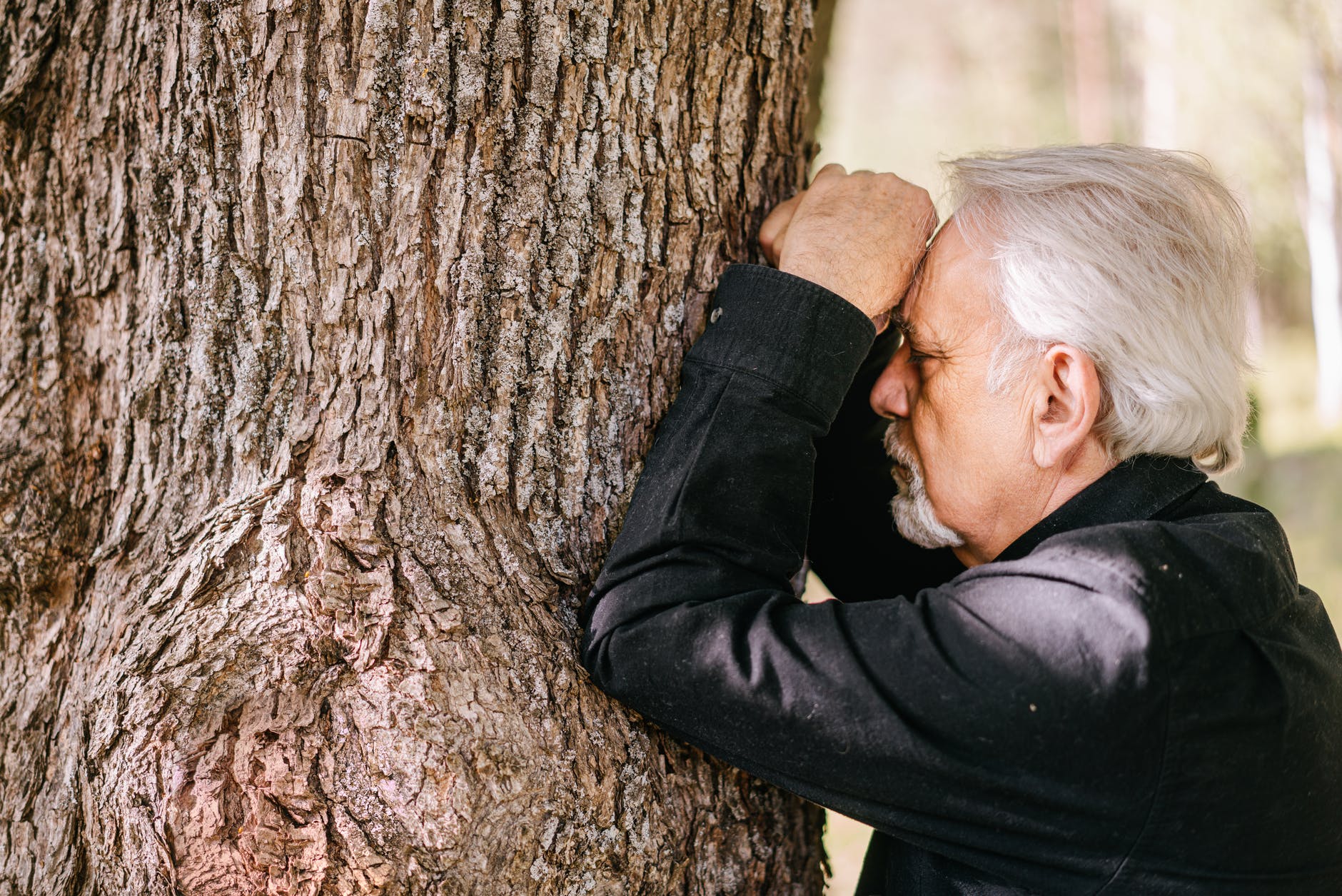
Photo by Ivan Samkov on <a href="https://www.pexels.com/photo/a-man-in-grief-leaning-on-a-tree-8964111/" rel="nofollow">Pexels.com</a>
PTSD and anxiety are common mental illnesses that affect a lot of people. Both of these are known to affect people, but those who face these tend to stay silent. While celebrities living with mental health issues are coming out and inspiring others to not feel afraid to speak up, there is still sadly this stigma that affects society that mental health issues are seen as ”bad”. Having mental health difficulties, especially PTSD can be hard. They are also difficult to deal with because they can be very unpredictable. However, there are some ways to cope with PTSD and anxiety.
What is PTSD?
Before breaking down the best ways to cope with PTSD, it’s important to first understand what it is. Post-traumatic stress disorder (PTSD) is a mental health condition that occurs after someone has experienced a traumatic event. PTSD symptoms include flashbacks, nightmares, and severe anxiety. Symptoms can be triggered by anything that reminds the person of the trauma they experienced.
The cause of PTSD is not known but it can be related to genetics, brain chemistry, and life experiences. This is something that everyone can experience. While it’s widely known that veterans get PTSD and will need rating for PTSD, others can get this too. This can include victims of abuse, a tragic accident, their jobs, and so much more.
Cognitive Behavior Therapy
Cognitive Behavior Therapy (CBT) is a type of psychotherapy that is based on the idea that how people think about events and how they react to them affects their feelings and behaviors. People who have PTSD often experience trauma-related thoughts, memories, or feelings in response to certain triggers. Some people with PTSD may avoid anything that reminds them of their trauma while others may be constantly on the lookout for potential threats.
But CBT in the form of therapy that helps think and bring back thoughts and memories. It allows the patient to basically think step by step about how everything happened, and why. But this form of therapy lets them know that whatever happened doesn’t mean that they deserve it.
Cognitive Restructuring
Cognitive restructuring is a form of psychotherapy that helps people to change the way they think about their thoughts. It’s a type of cognitive-behavioral therapy that can be helpful in addressing anxiety, panic attacks, and other related disorders. The goal of this technique is to help you understand how your thoughts affect your feelings and behaviors, so you can change them if they’re not serving you well. This therapy can sometimes take years. While it doesn’t help cure PTSD, it does help those who face their fears.
Mindfulness Meditation
While this isn’t therapy, it is a technique that therapists strongly recommend patients put into use. This is a technique where the person focuses on their breathing or an object in front of them in order to take control over their thoughts. Being in control is one of the first parts of having better coping mechanisms for PTSD.
Relaxation Techniques
Deep breathing exercises, yoga, and massage can all be helpful for someone who suffers from PTSD or anxiety symptoms
Exercise
Physical activity has been shown to reduce stress levels and help people sleep better at night. A lot of counselors and therapists will recommend that their patients do this. Physical activity released endorphins, and this alone can help the mental health of a PTSD patient.


